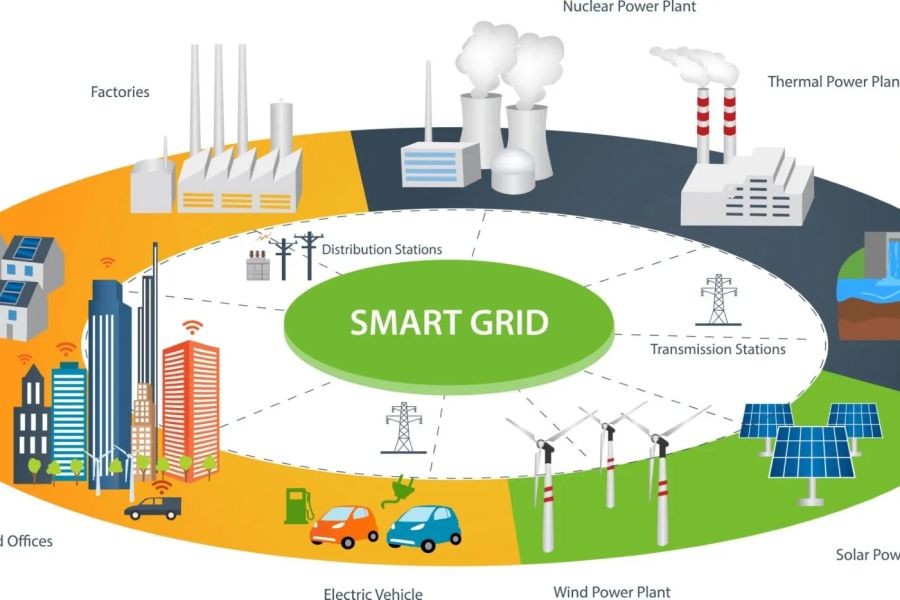As New Zealand stands on the brink of rapid technological advancements, one question looms large: Will the cherished work-life balance that Kiwis pride themselves on survive in the age of automation? With automation poised to transform industries worldwide, understanding its potential impact on New Zealand's economy and workforce is crucial. This article explores whether New Zealand’s work-life balance can withstand these changes, offering insights into the future of work in a nation renowned for its quality of life.
🔹 The State of Work-Life Balance in New Zealand
New Zealand is often celebrated for its commitment to work-life balance, with a strong emphasis on leisure, family time, and overall well-being. According to a 2023 report by Stats NZ, over 70% of Kiwis report being satisfied with their work-life balance, a figure that is notably higher than in many other developed countries. This satisfaction stems from a combination of factors, including flexible work arrangements, generous parental leave policies, and a cultural emphasis on outdoor activities and family.
However, as automation technologies continue to evolve, they are beginning to reshape the landscape of work. Sectors such as manufacturing, logistics, and even healthcare are adopting automation to improve efficiency and reduce costs. While this technological shift promises increased productivity, it also raises concerns about job displacement and the erosion of traditional work structures.
📊 Data-Driven Analysis: Automation in NZ Industries
The Ministry of Business, Innovation, and Employment (MBIE) has estimated that approximately 31% of jobs in New Zealand are at risk of automation by 2030. The sectors most affected include agriculture, manufacturing, and retail trade. However, it's important to note that automation doesn't necessarily equate to job loss. Instead, it often leads to job transformation, requiring workers to adapt and acquire new skills.
For instance, the agricultural sector, which is a cornerstone of New Zealand’s economy, is increasingly integrating automation technologies such as robotic milking machines and automated crop monitoring systems. These innovations are designed to enhance productivity and sustainability, ensuring that New Zealand remains competitive on a global scale. Yet, they also necessitate a workforce that is skilled in operating and maintaining such technologies.
🔹 Case Study: Fonterra’s Automation Journey
Problem: Fonterra, New Zealand's largest dairy cooperative, faced challenges in maintaining efficiency and meeting global demand due to labor shortages and increasing operational costs.
- With dairy being a significant contributor to the nation’s economy, inefficiencies threatened profitability.
Action: In response, Fonterra invested in advanced automation technologies, including AI-driven sensors and robotic milking systems.
- By adopting these technologies, Fonterra aimed to optimize milk production and streamline logistics.
Result: Within two years, Fonterra reported a remarkable 20% increase in milk yield and a 15% reduction in operational costs.
- These improvements were attributed to more precise monitoring and reduced labor requirements.
Takeaway: Fonterra’s experience underscores the potential of automation to enhance efficiency and competitiveness. However, it also highlights the need for workforce upskilling to manage these technologies effectively.
🔹 Pros and Cons of Automation on Work-Life Balance
✅ Pros:
- Increased Productivity: Automation can significantly boost productivity, allowing businesses to achieve more with fewer resources.
- Enhanced Flexibility: Automation can enable more flexible work arrangements, as repetitive tasks are handled by machines.
- Better Job Satisfaction: Employees can focus on more meaningful and engaging tasks, potentially improving job satisfaction.
❌ Cons:
- Job Displacement: There is a risk of job losses, particularly in sectors heavily reliant on manual labor.
- Increased Pressure: Automation can lead to higher expectations for productivity, potentially increasing workplace stress.
- Skill Gaps: The transition to automation requires significant upskilling, which can be challenging for some workers.
🔹 Common Myths & Mistakes in Automation Adoption
Myth: "Automation will eliminate all jobs." Reality: While automation will transform many roles, it will also create new opportunities, particularly in tech-driven and creative fields (Source: Future of Work NZ 2024).
Myth: "Only large corporations can afford automation." Reality: Many affordable automation solutions are available for small and medium enterprises, enabling them to compete more effectively.
Myth: "Automation always leads to better work-life balance." Reality: Without proper management, automation can increase work pressure and blur boundaries between work and personal life.
🔹 Future Trends & Predictions
Looking ahead, the future of work in New Zealand will likely be characterized by a hybrid model combining human expertise with automated technologies. According to a 2024 report by Deloitte, by 2030, nearly 60% of New Zealand businesses will adopt a hybrid workforce model, leveraging automation to handle routine tasks while empowering employees to focus on creative and strategic initiatives.
Moreover, the government and educational institutions are expected to play a pivotal role in facilitating this transition by introducing policies and training programs to upskill the workforce. For example, the Tertiary Education Commission is investing in vocational training programs specifically designed to equip workers with the skills needed for automated environments.
🔹 Conclusion
In conclusion, while the age of automation presents challenges to New Zealand's work-life balance, it also offers opportunities for innovation and growth. By embracing automation responsibly and investing in workforce development, New Zealand can maintain its reputation as a leader in work-life balance while remaining competitive on the global stage. To navigate this transformative period, businesses and individuals alike must be proactive in adapting to these changes.
What’s your take on automation's impact on work-life balance in New Zealand? Share your insights below!
🔍 People Also Ask (FAQ)
- How does automation impact businesses in New Zealand? NZ businesses leveraging automation report 25%+ higher productivity, according to MBIE. Adopting these technologies can enhance efficiency and competitiveness.
- What are the biggest misconceptions about automation? One common myth is that automation will eliminate all jobs. However, research from Future of Work NZ shows it will transform roles, creating new opportunities.
- What are the best strategies for implementing automation? Experts recommend starting with a needs assessment, followed by pilot testing, and ensuring continuous training for employees for long-term success.
- What upcoming changes in New Zealand could affect automation? By 2026, policy updates in the tech sector could shift the automation landscape—stay ahead by adopting emerging trends.
- Who benefits the most from automation? Automation benefits industries like manufacturing, agriculture, and retail, making it a strategic focus for businesses aiming for increased productivity.
🔍 Related Search Queries
- "Impact of automation on employment in New Zealand"
- "Work-life balance in the age of technology"
- "Future of work in New Zealand 2030"
- "Automation trends in NZ industries"
- "New Zealand workforce automation strategies"
- "Hybrid workforce models in New Zealand"
- "Upskilling for automation in NZ"
- "Fonterra automation case study"
- "Pros and cons of automation in New Zealand"
- "Myths about automation in NZ"
































HelaineNew
1 month ago